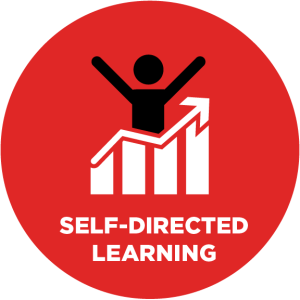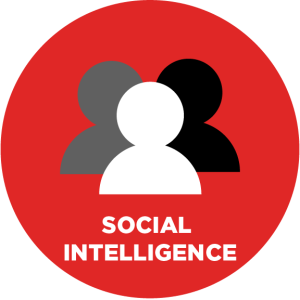2.4 How Might Preferences, Culture and Personality Impact My Learning?
Opportunity
- How do my culture, personality, and preferences influence my learning?
- Can taking a self-assessment accurately define who I am?
- What is available for specialized learning needs to help me learn?
In this section, we recognize that all people learn differently and take time to reflect on what other factors may influence you on your learning journey.
Learning Preferences
Over the years research has supported and denied that how you receive information impacts your ability to learn. Learning preferences include the mode or combination of modes that learners tend to prefer or respond well to, including:
- aural (learn best by listening),
- visual (learn best by seeing pictures, graphs, charts),
- read/write (learn best by reading and taking notes),
- kinesthetic (learn best by doing),
- feeling (learn best by associating emotion to the learning).
This research suggested that some types of learning may work better with some modes. For example, when it comes to learning to ski, it is much more efficient to practice it than to read about it. Along with the type of learning and the preference of the learner, it is good to note that individual learners have different strengths and abilities. Utilizing these to the fullest makes for better learning.
Today, is it generally believed that we use all of these modes, often to best match the situation, however, memory is most enhanced when a combination of modes are used.
 One of the most common learning preferences self-assessments can be taken at Vark Learn and you can visit Appendix C to learn more about some strategies that may help you learn using all your senses. You will get a score in four areas which attempts to identify the preferred way in which you like to learn.
One of the most common learning preferences self-assessments can be taken at Vark Learn and you can visit Appendix C to learn more about some strategies that may help you learn using all your senses. You will get a score in four areas which attempts to identify the preferred way in which you like to learn.
Cultural Preferences
Some learning preferences are determined by culture and practice. Certain cultures or groups have specific ways of learning that differ from traditional Western practices. Indigenous learning, for example, often uses story-telling to demonstrate concepts. Stories are passed down from generation to generation, using elders to teach the younger ones. Learning in this manner incorporates social aspects, feelings of safety, and a familiarity for Indigenous learners.
Video: Kalihwiyo Library Learning Commons
Creating a Space for Indigenous Learning.
Video: “Kalihwiyo | Library Learning Commons Fanshawe College” by Fanshawe Institute of Indigenous Learning [3:30] transcript available.
Personality Types
Understanding how personality traits and learning styles are categorized can be useful in making decisions and choices for your own learning activities. It can be interesting to review how personality styles may impact your ability to learn.
Whether you put any value on these theories, it’s important to recognize that employers may use personality assessments in the hiring process. For example, an organization may identify a lack of strong leadership in its marketing department. Everyone is good at doing the tasks that need to get done, but no one has the ability to guide the team through a project to deliver the results on time.
When reviewing a series of qualified applicants, a personality assessment may be used to identify which candidates have a leadership personality style before offering anyone an interview.
What knowing about personality traits and learning can do for you is to help you be aware and informed about how these affect you so you can deal with them directly.
Some common personality assessments that you may have heard of include the Myers-Briggs Personality Assessment.
Myers-Briggs: Identifying Personality Traits and Styles
The Myers-Briggs system is one of the most popular personality tests, and it is relatively well known. It has seen a great deal of use in the business world with testing seminars and presentations on group dynamics. In fact, it is so popular that you may already be familiar with it and may have taken a test yourself to find out which of the 16 personality types you most favour.
The basic concept of Myers-Briggs is that there are four main traits. These traits are represented by two opposites, seen in the table below.
| Extroverted (E) | vs. | Introverted (I) |
| Intuition (N) | vs. | Sensing (S) |
| Feeling (F) | vs. | Thinking (T) |
| Judging (J) | vs. | Perceiving (P) |
It is thought that people generally exhibit one trait or the other in each of these categories, or that they fall along a spectrum between the two opposites. For example, an individual might exhibit both Feeling and Thinking personality traits, but they will favour one more than the other.
 You can take a free version of a simple Myers-Briggs Personality Self-Assessment by going to Appendix C. Remember, these types of assessments should never become a way we limit ourselves and who we are. They do, however, offer a opportunity for us to stop and reflect on who we are and identify some areas we may want to work on. They also help us recognize how others may think or act, which raises our social intelligence.
You can take a free version of a simple Myers-Briggs Personality Self-Assessment by going to Appendix C. Remember, these types of assessments should never become a way we limit ourselves and who we are. They do, however, offer a opportunity for us to stop and reflect on who we are and identify some areas we may want to work on. They also help us recognize how others may think or act, which raises our social intelligence.Taking Responsibility for Your Learning
Take responsibility for your own learning, rather than expecting the instructor to help you through the subject in your own personal way. For example, if your strength is as a visual learner but your instructor simply stands at a podium and lectures, then provide your own visual stimulation by sketching concept maps in your notes or by visualizing how information being presented might look in a pie chart or graph.
As you move further into your curriculum, you will likely have more small classes with class discussions, demonstrations, group presentations, and other learning activities. Once you are in classes closely related to a career path that interests you, you will find your personal style more relevant to the kinds of material you will be learning.
Much learning in college also comes from interactions with others, who often have different learning preferences. Be open to interacting with other students and instructors who are different from you, and you will find yourself learning in ways that may be new to you.
Learning comes in many forms. Whatever learning model you consider, you should pay attention to what works for you (and what doesn’t) and organize your study sessions accordingly.
Exercise: Learning Preferences
- How would you describe your personal learning style preference?
- Name an activity from which you generally learn very well.
- Name a type of learning experience you may have difficulty with.
- For the activity above, list at least two strategies you can use to improve your learning effectiveness when in that situation next time.
- If you experience a situation in which your personal learning style preference seems to clash hopelessly with an instructor’s teaching style, what is your best course of action?
- Ask the instructor to teach in a different way.
- Drop the class.
- Adapt your style or study with other students.
- Complain to the dean.
- Explain your answer to question 5
“2.5 Personality Types and Learning” from College Success by Amy Baldwin & Open Stax is licensed under a Creative Commons Attribution License
“Chapter 2 Learning Preferences – Introduction” and “2.1 Learning Preferences and Strengths” from Student Success by Mary Shier is licensed under a Creative Commons Attribution 4.0 International
The mode or combination of modes that learners tend to prefer or respond well to.
Learning mode where you learn best by listening.
Learning mode where you learn best by seeing pictures, graphs, and charts.
Learning mode where you learn best by reading and taking notes.
Learning mode where you learn best by doing.
Learning mode where you learn best by associating emotion to the learning.
One of the most popular personality tests that consists of four main traits that are represented by two opposites: Extroverted (E) vs. Introverted (I), Intuition (N) vs. Sensing (S), Feeling (F) vs. Thinking (T), Judging (J) vs. Perceiving (P).

